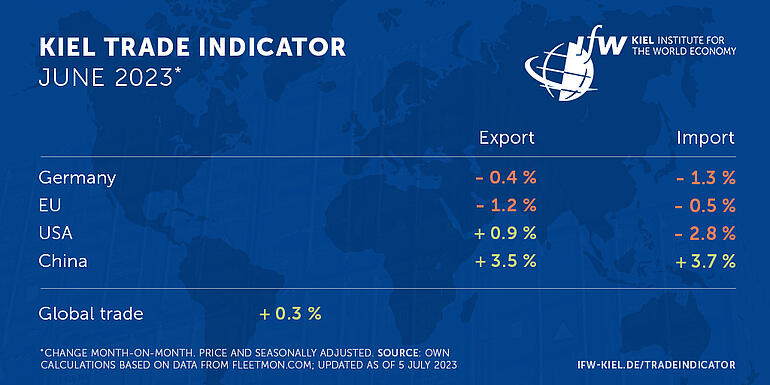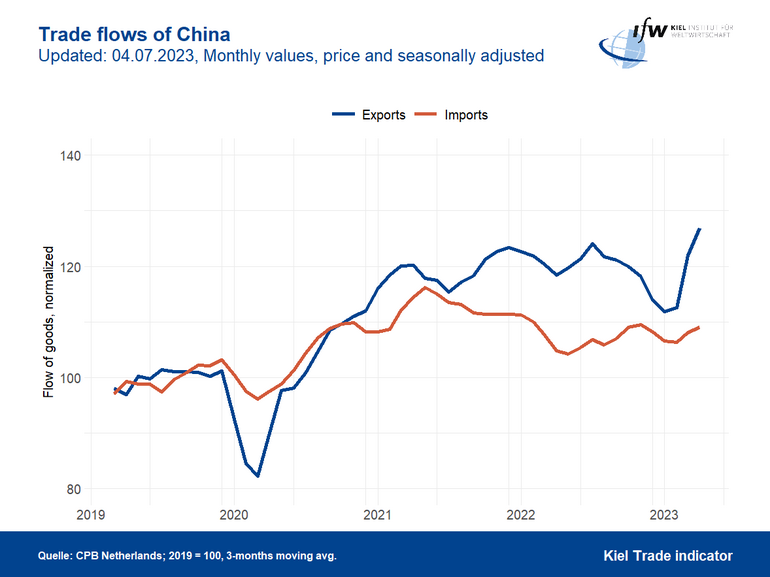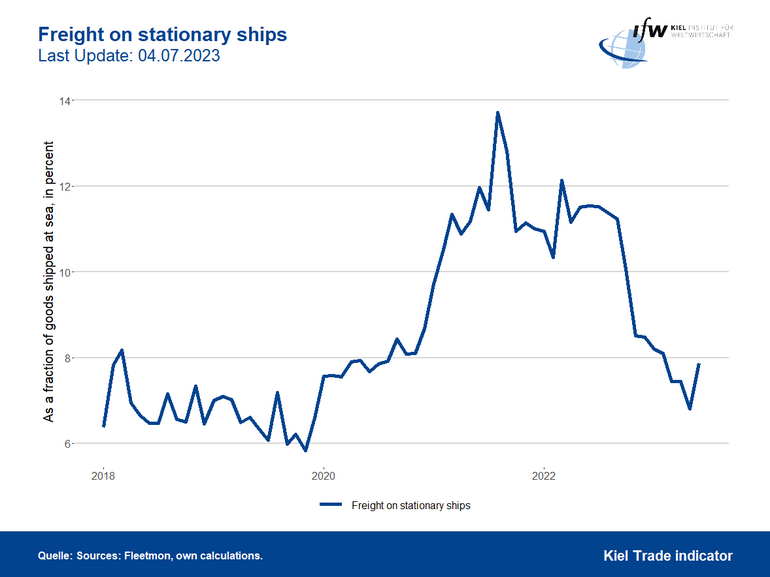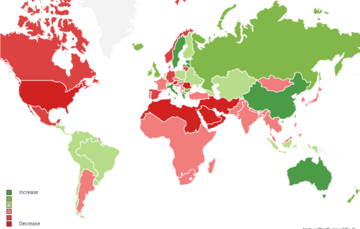News
China supports world trade and breaks export record

The latest Kiel Trade Indicator update for June shows an increase of 0.3 percent in global trade compared with the previous month of May (price and seasonally adjusted).
For Germany, the Kiel Trade Indicator values for both exports (-0.4 percent) and imports (-1.3 percent) are in the red. The same applies to EU exports (-1.2 percent) and imports (-0.5 percent).
"Germany and EU trade appears to have recovered in the second half of June. Based initially on container ship movements in the first half of the month, a gloomier picture was emerging for exports from both economies, but this has now not materialized," says Vincent Stamer, head of Kiel Trade Indicator. "From this point of view, the sideways movements or slight declines in the trade figures here should be seen as positive."
For U.S. trade, the Kiel Trade Indicator shows a positive value (+0.9 percent) for exports and a negative for imports (-2.8 percent) compared to May. The figures for China point upward for both exports (+3.5 percent) and imports (+3.7 percent).
China breaks export record
Since the spring, China has been able to significantly increase its exports. Measured in current prices, the country exported goods worth 315 bn. US Dollars in March. China thus became the first country in the world to break the 300 billion mark.

"China is increasingly recovering from the global low in demand last winter, especially with regard to exports, and is thus also supporting global trade in goods. Surprisingly, imports have not risen to the same extent and China has been running a significant goods surplus since last year. Weak domestic demand and less dependence on intermediate products from abroad could be the reasons," says Stamer.
Shipping congestion on the rise again
The amount of all goods shipped worldwide in containers that are stuck in traffic jams rose in June for the first time in a year. Just under 8 percent are currently stuck, up from just under 7 percent a month ago.

"A combination of increased traffic off China and the restrictions on the Panama Canal, which has limited navigability due to low water, may be responsible for the recent increase in shipping congestion. For Germany, however, the Panama Canal is of little importance compared to the Suez Canal, as less than 2 percent of the volumes exported from German ports are destined for the Pacific coast of North and South America," Stamer says.
The next update of the Kiel Trade Indicator will be on July 20 (without media information) and on August 8 (with media information) for July trade data.
For more information on the Kiel Trade Indicator and forecasts for 75 countries and regions, visit www.ifw-kiel.de/tradeindicator.

About the Kiel Trade Indicator
The Kiel Trade Indicator estimates trade flows (imports and exports) of 75 countries and regions worldwide, the EU and world trade as a whole. Specifically, the estimates cover over 50 individual countries as well as regions such as the EU, sub-Saharan Africa, North Africa, the Middle East or emerging Asia. It is based on the evaluation of ship movement data in real time. An algorithm programmed at the Kiel Institute uses artificial intelligence to analyze the data and translates the ship movements into price and seasonally adjusted growth figures compared with the previous month.
We update the data twice a month. Around the 20th (without press release) for the current and the following month and around the 5th (with press release) for the previous and the current month.
Arriving and departing ships are recorded for 500 ports worldwide. In addition, ship movements in 100 maritime regions are analyzed and the effective utilization of container ships is derived from draught information. Country-port correlations can be used to generate forecasts, even for countries without their own deep-sea ports.
Compared to previous leading trade indicators, the Kiel Trade Indicator is available much earlier, is much more comprehensive, relies on a uniquely large database using big data, and has a low statistical error by comparison. The algorithm of the Kiel Trade Indicator uses machine learning, so that the quality of the forecast continues to improve over time.
